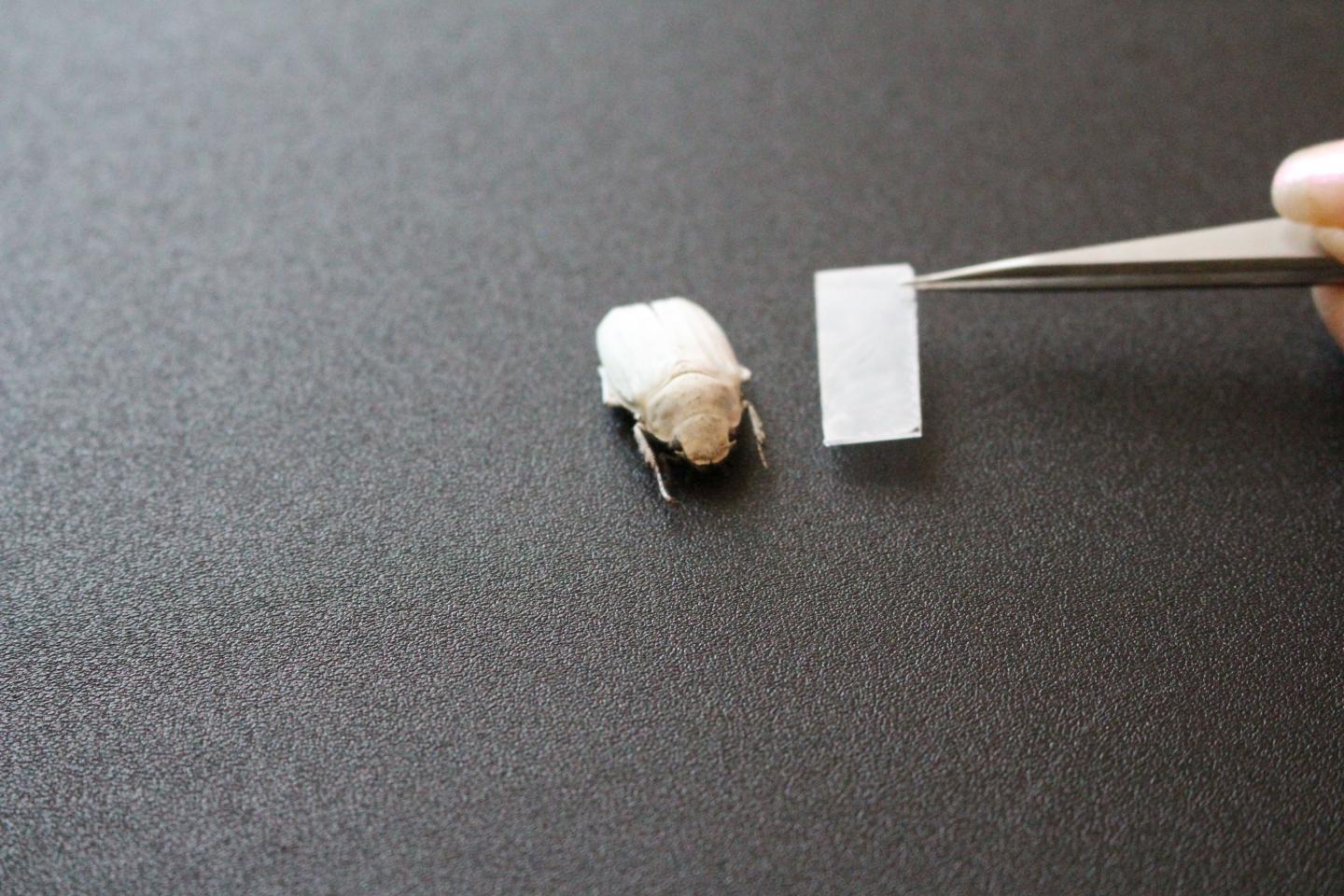The Karlsruhe Institute of Technology (KIT) has invented polymer foils by a new process with the result that such foils are very thin with a high light-scattering rate. This is an economical material applicable industrially to many objects to provide them an enticing white look. Additionally, these objects are more environment-compatible.
A brilliant white surface of this foil’s objects looks modern, bright, and clean. The traditional method is to use Titanium Dioxide for the white color of objects, but the pigment is highly criticized. However, Titanium Dioxide can prove harmful to human health.
Professor Hendrik Hölscher of KIT’s Institute of Microstructure Technology (IMT) and his team got inspiration from the white beetle Cyphochilus insulanus, the chitin scales of which are white due to their special nanostructure. The structure scatters light, and the scenario looks similar to shaving or bathing foam resulting in white color. This nascent technology generating economical, environment-compatible white optics finds use in varied surfaces.
Titanium dioxide has a very high refractive index, it reflects incident light almost completely. But it is associated with the drawback that its particles do not de-grade and thus pollute the environment in the long term
Hendrik Hölscher
Professor, Karlsruhe Institute of Technology (KIT)
![Hendrik_Hölscher.jpg]()
This polymer foil when of 9 micrometers thickness reflects more than 57 percent of the incident light. If the foil thickness is increased, 80 to 90 percent light is reflected. During development, the microstructure similar to sponges was applied to acryl glass. This can be used in the case of other polymers.
The researcher concludes that engineers generally output solutions using many chemical elements. On the other hand, nature restricts to a unique basic material endowed with enticing physic-chemical, optical, and mechanical properties originating from a complex three-dimensional structure. Bionics that is dedicated to replicating the phenomena of nature for technical use results in completely novel output that couldn’t have been reached at any other way.
“We avoid the use of pigments that are harmful to health and the environment by producing porous polymer structures of comparably high scattering efficiency,” Hölscher says. “Based on this model, we produce polymer-based solid, porous nanostructures, which resemble a sponge,” says Hölscher, who heads the Biomimetic Surfaces Group of IMT.
“The polymer foils produced by our process are extremely thin, flexible, and of low weight, but still mechanically stable and can be applied industrially to a variety of products,” the physicist explains.
“Apart from foils, entire objects may be colored white. As a next step, we plan to produce particles, e.g. small beads that are added to other materials,” Hölscher says. “We have already received several inquiries from companies that want to make their products environmentally more compatible.”
For more details, visit https://www.kit.edu/







